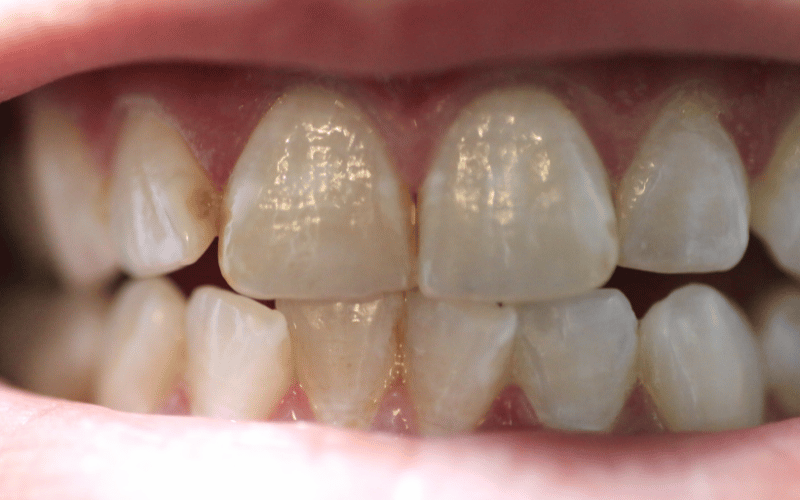3. Discoloration of the Tooth: A Common Red Flag

Tooth discoloration is a common and often early sign of Dens Invaginatus. The affected tooth might display shades of yellow, brown, or even gray.
This discoloration can be uniform across the tooth or appear as localized spots or streaks. Recognizing this change in tooth color is vital, as it can serve as an early indicator of the condition and prompt timely dental evaluation.
Various factors can contribute to tooth discoloration in cases of DI. The enamel invagination can create areas that are difficult to clean, leading to the accumulation of plaque and tartar.
Over time, this build-up can result in staining and discoloration. Additionally, the structural anomalies associated with DI can affect the tooth’s enamel, making it more susceptible to staining from food, beverages, and other external factors.
Tooth discoloration due to DI is not just an aesthetic concern; it also carries implications for the patient’s oral health. Discolored areas may be more prone to decay, and the structural anomalies of DI can complicate treatment efforts. Addressing both the aesthetic and health aspects of tooth discoloration requires a comprehensive and patient-centered approach, tailoring interventions to meet the unique needs of each individual case.
Treatment options for tooth discoloration associated with DI can range from professional dental cleaning to remove surface stains, to more extensive restorative procedures. In some cases, dental professionals might recommend veneers or crowns to address both the aesthetic and structural challenges posed by DI. The choice of treatment should be guided by a thorough evaluation of the patient’s condition, with a focus on preserving the natural tooth structure and promoting overall oral health. (3)